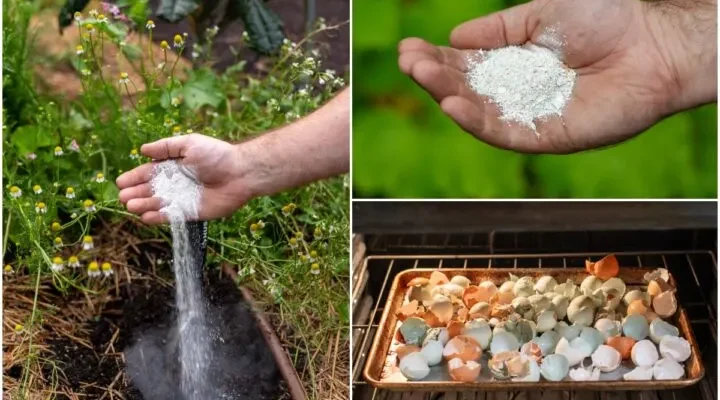When mixing up that batch of chocolate chip cookies or making your bacon and eggs for breakfast, hang on to the eggshells. Believe it or not, the benefits of the “incredible, edible egg” extend to the shell it comes in too. Using eggshells in the garden (and for your houseplants) is a great idea. But like so many popular internet gardening tips, some uses suggested for eggshells don’t add up.
What’s In an Eggshell?
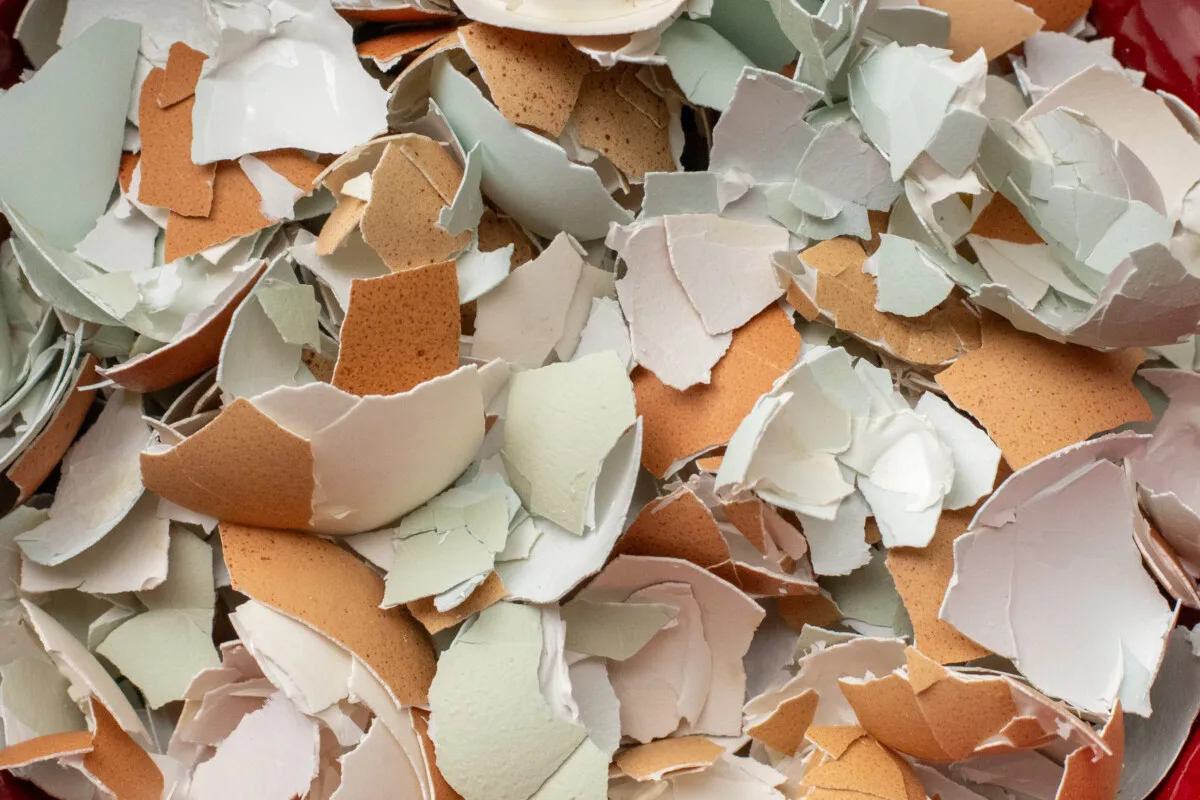
No, I’m not talking about the egg within; I’m talking about what makes up the shell itself. It turns out eggshells are a pretty great source of calcium. There are roughly 380mg of calcium carbonate per gram in chicken eggshells. (NIH)
If you’re already getting enough calcium in your diet (You know you can eat eggshells, right?), the next best place to use eggshells is in your garden.
Eggshells for the Gardening Long Game
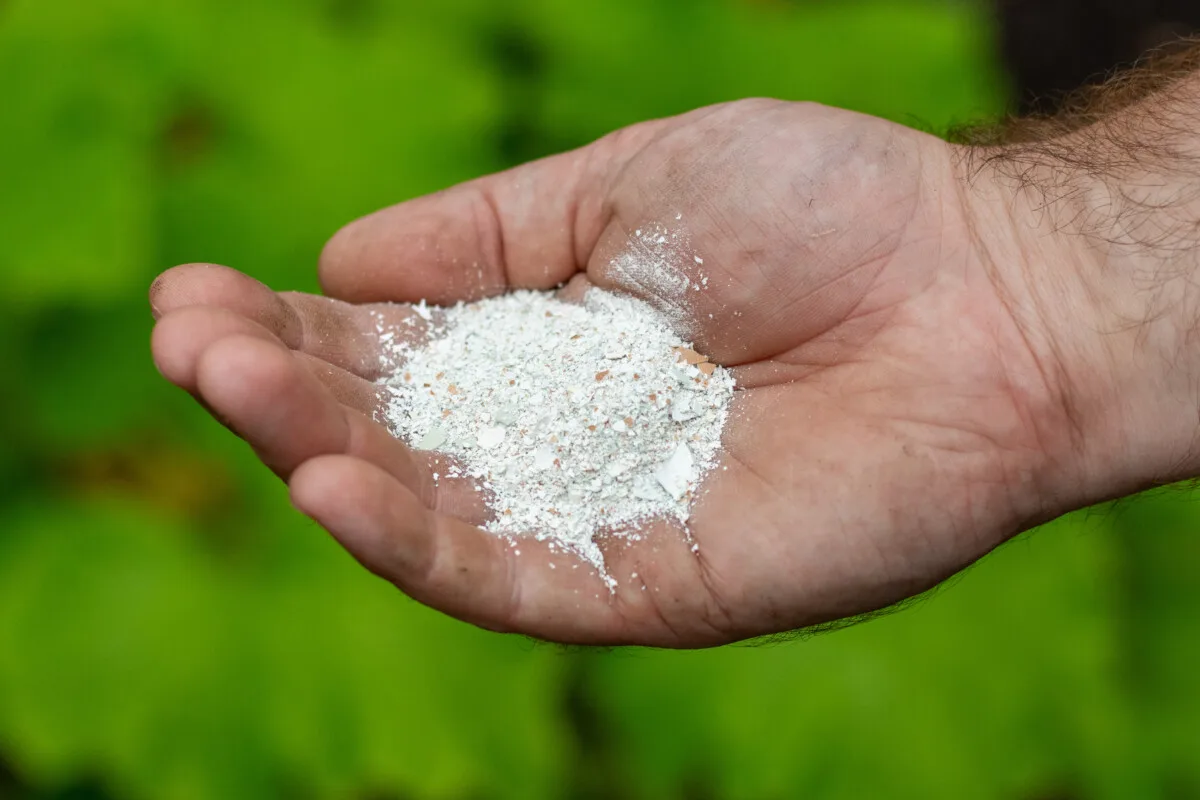
Aside from calcium, eggshells contain other nutrients that benefit plants. Phosphorous, magnesium, sodium, potassium and a few other trace minerals are present in eggshells. But it’s important to keep in mind that the amount of these minerals is very small.
If you hope to use eggshells as an all-purpose fertilizer or a garden cure-all, you’ll likely be disappointed.
However, if you make a habit of saving and using eggshells in your garden year after, you’ll end up with healthier, more nutrient-rich soil in the long run. Whenever we add organic matter to our gardens, it’s all about the long game – slowly replacing lost nutrients and letting things break down and incorporate into the soil. That’s the key to consistently robust crops.
First, let’s crack open a few gardening eggshell myths, then we’ll talk about ways you can use eggshells in the garden and how to prepare them.
Ways Not to Use Crushed Eggshells in the Garden
1. Eggshells as Pest Control
You see this tip often – sprinkle a circle of eggshell shards around plants to deter slugs and snails. I hate to break it to you, but they will crawl right over them. And if they do choose another path, it’s generally to a different tasty plant in your garden.
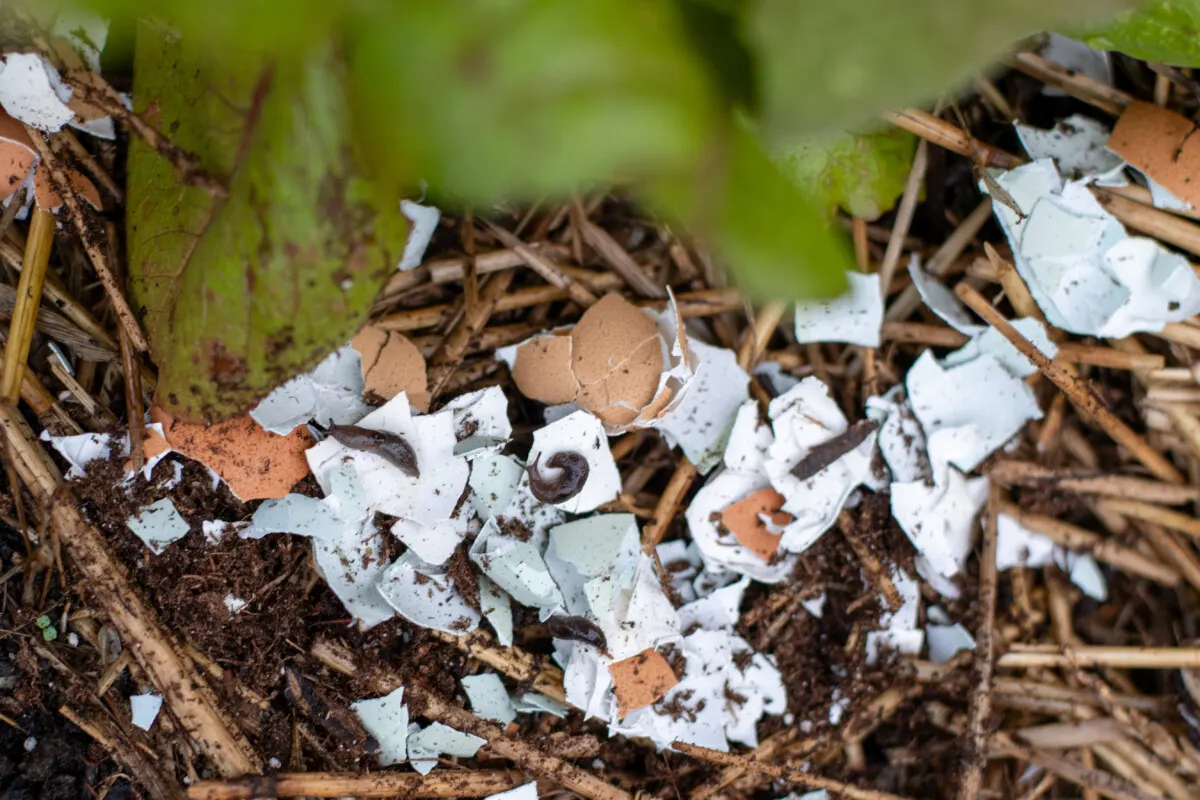
If you want a method of getting rid of snails and slugs that actually works, check out Lindsay’s article on natural ways to get rid of them.
2. Use Eggshells to Fix Acidic Soil
Contrary to popular belief, eggshells aren’t an effective means of adjusting soil pH. While, yes, eggshells are mostly made up of calcium carbonate, which is alkaline, their impact on soil pH is negligible.
The reason for this is that eggshells decompose quite slowly in the soil. The calcium carbonate is released gradually over a long time, so it doesn’t significantly alter the overall pH of the soil. However, keep reading to find out what eggshells can do for soil pH.
If you need to significantly adjust the pH of your soil, a better source of calcium carbonate is agricultural lime. It has a much higher concentration of active compounds that can effectively modify soil pH when applied appropriately.
Of course, if you need to adjust the pH of your soil, it’s best to conduct a soil test to determine its current pH level and any specific amendments required to achieve the desired pH range for your plants. Soil testing can be done with at-home soil testing kits, mail-in tests or through your local county extension office.
3. Eggshell Mulch
Hoo boy, I mean, yes, of course, you can use eggshells as mulch in the garden. But unless you’re eating thirty-seven dozen eggs a week, it will be nearly impossible to accumulate enough eggshells to mulch your garden effectively.
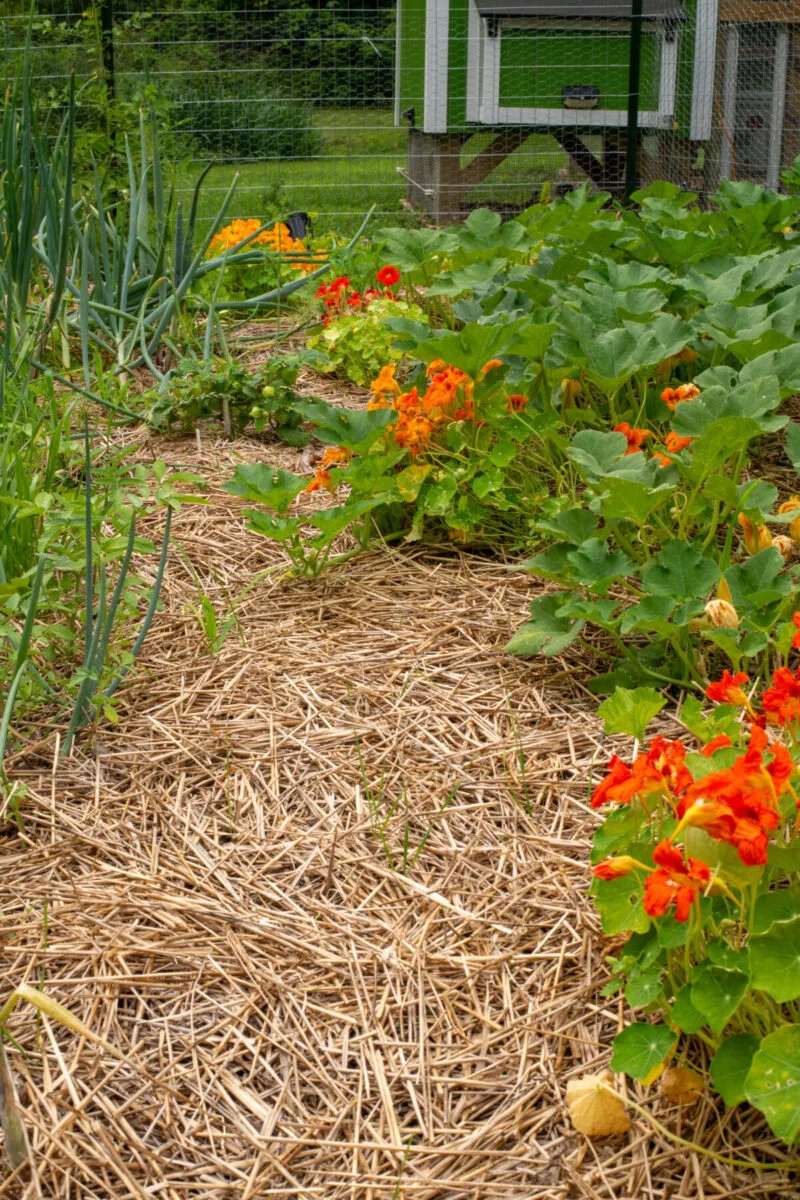
Please, do mulch your garden, but choose a better material. There are so many inexpensive options; some you probably already have on hand.
4. Use Eggshells to Start Seedlings
We’ve all seen the cute photos of seedlings growing out of an eggshell filled with dirt. Heck, I’ve even written about using eggshells in this way. But I can say with some experience it’s no longer my favorite “biodegradable” seedling pot.
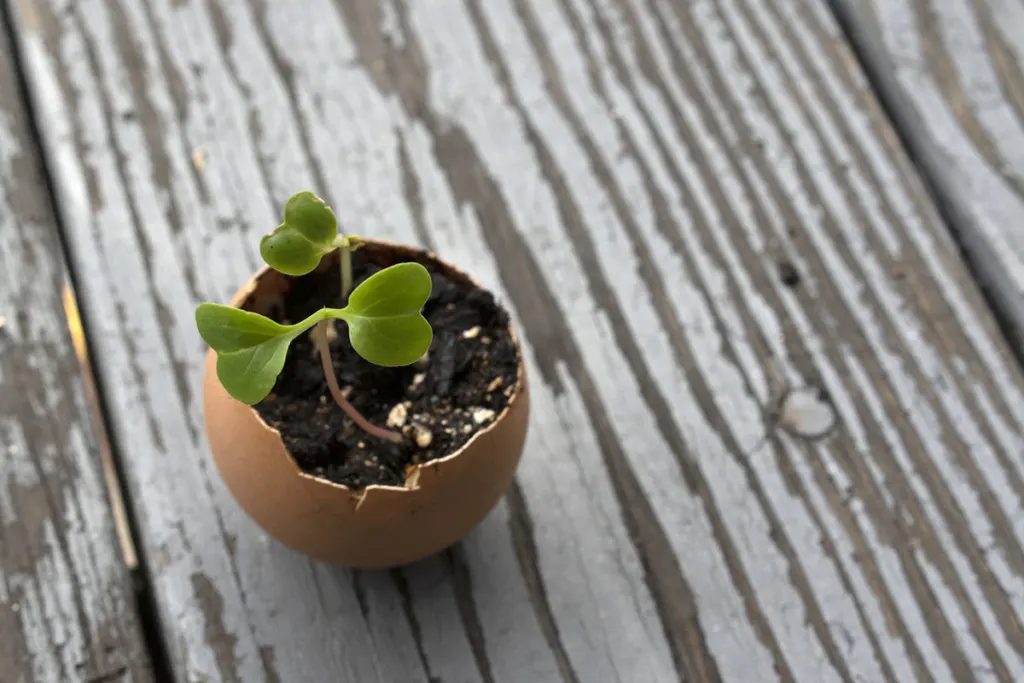
While it does work, and you will get a seedling, there’s not enough dirt in an eggshell to allow the tender new plant to produce a robust root system. It’s not big enough to sustain the seedling to grow large enough to be transplanted outdoors. And because it will need to be potted up almost immediately, you’re likely to crush the root system trying to get the tiny plant out of the eggshell and into a larger pot.
It’s cute. But not at all practical.
Ways to Use Crushed Eggshells in the Garden
Okay, now that we’re done discussing what eggshells can’t do for your veggie patch, let’s look at what this free soil amendment can do.
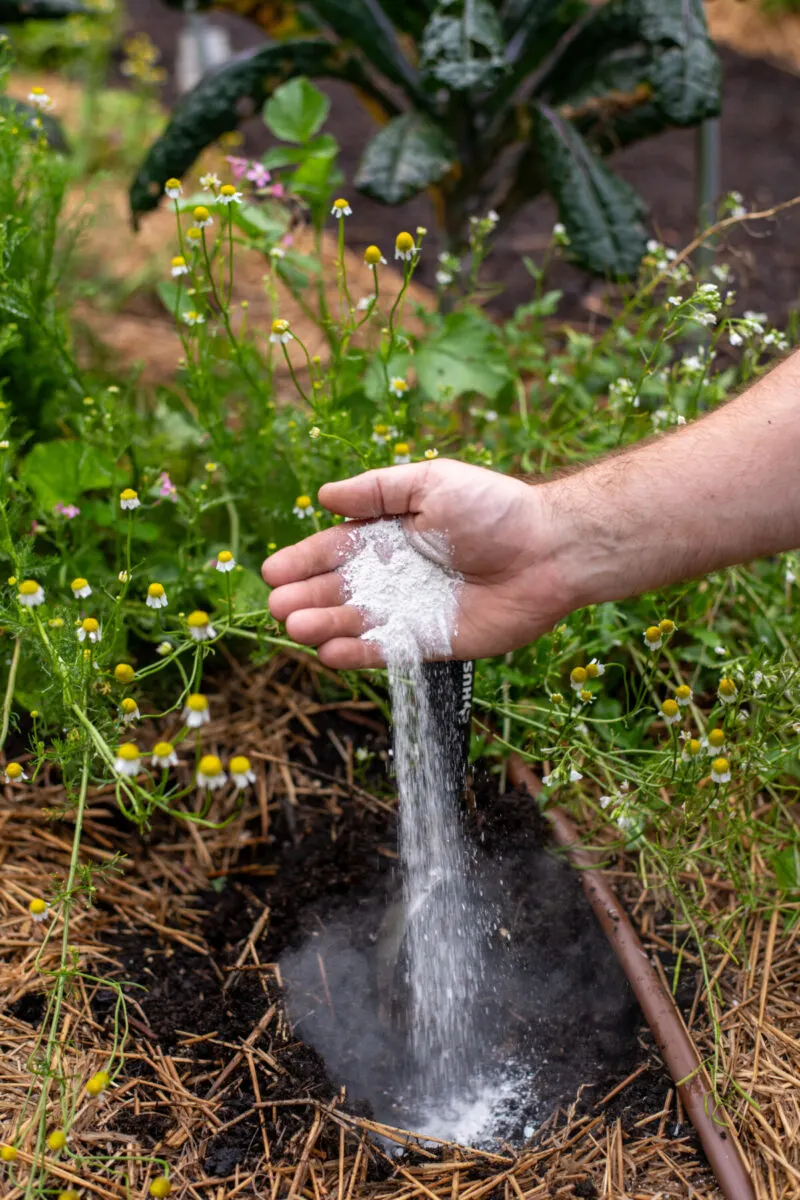
1. Calcium Soil Amendment:
Sprinkle the crushed eggshells directly into the soil when planting seeds or transplants. Dig them into the top layer of the soil or mix them in with compost or potting mix before planting. The shells will slowly break down over time, releasing calcium and other trace nutrients into the soil. Calcium is vital for plant growth and development, playing a crucial role in cell structure, root development, and nutrient uptake.
If you’ve had your soil tested and it’s severely calcium deficient, you’ll want to opt for a quicker method of adding calcium to the soil along with eggshells.
2. pH Buffer
Calcium carbonate has a limited neutralizing effect on soil acidity. While eggshells can’t fix highly acidic soil, the slow release of calcium from eggshells in your soil can act as a pH buffer, helping to maintain a good soil pH for optimal plant growth.
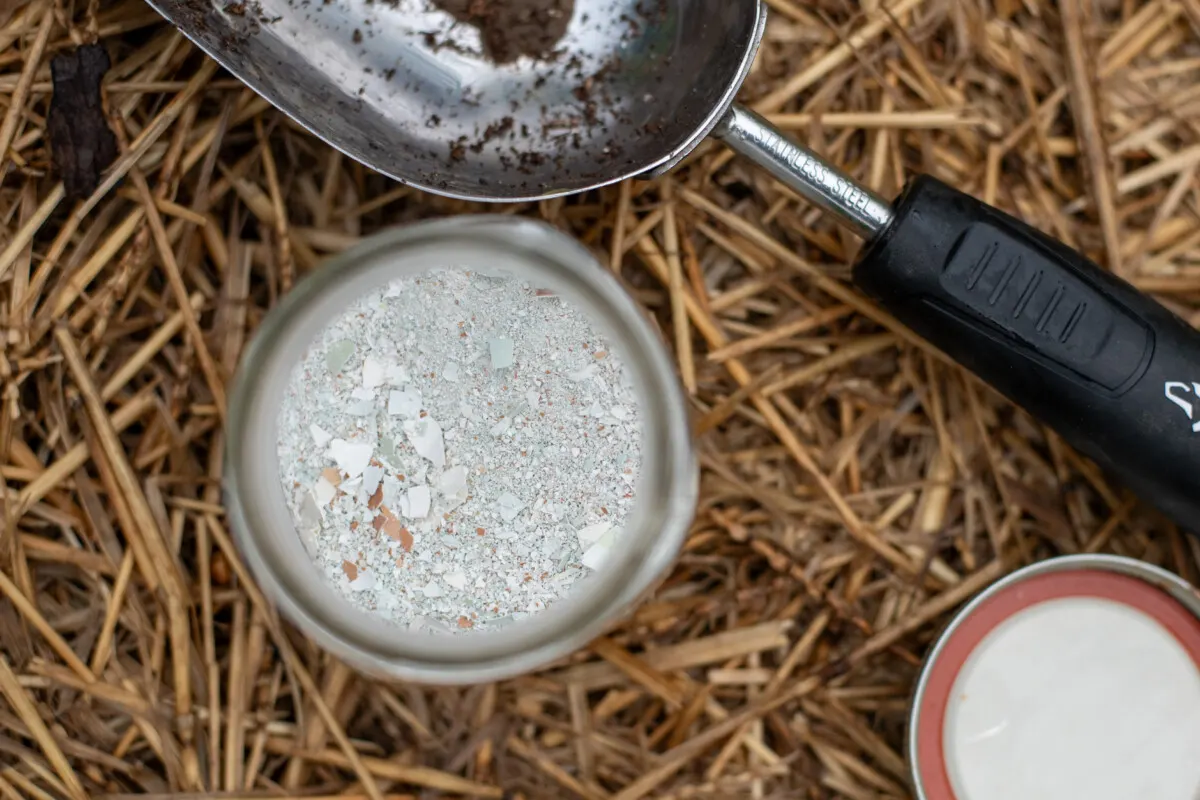
3. Improve Soil Structure
Using coarsely ground eggshells can help improve your soil’s structure. When mixed in with heavy clay soils, they contribute to better drainage and aeration by increasing the pore spaces between soil particles. Improved soil structure promotes healthy root growth and enhances nutrient and water availability to plants. It’s a win-win!
4. Compost Them
If you want the benefits of eggshells in the garden without all the extra work of drying, powdering, and sprinkling, pitch your eggshells into your compost bin. While it will take longer for the larger shells to break down, in the end, you’ll still end up with the benefit of added calcium when you add the finished compost to your garden.
Eggshells Are for Houseplants Too
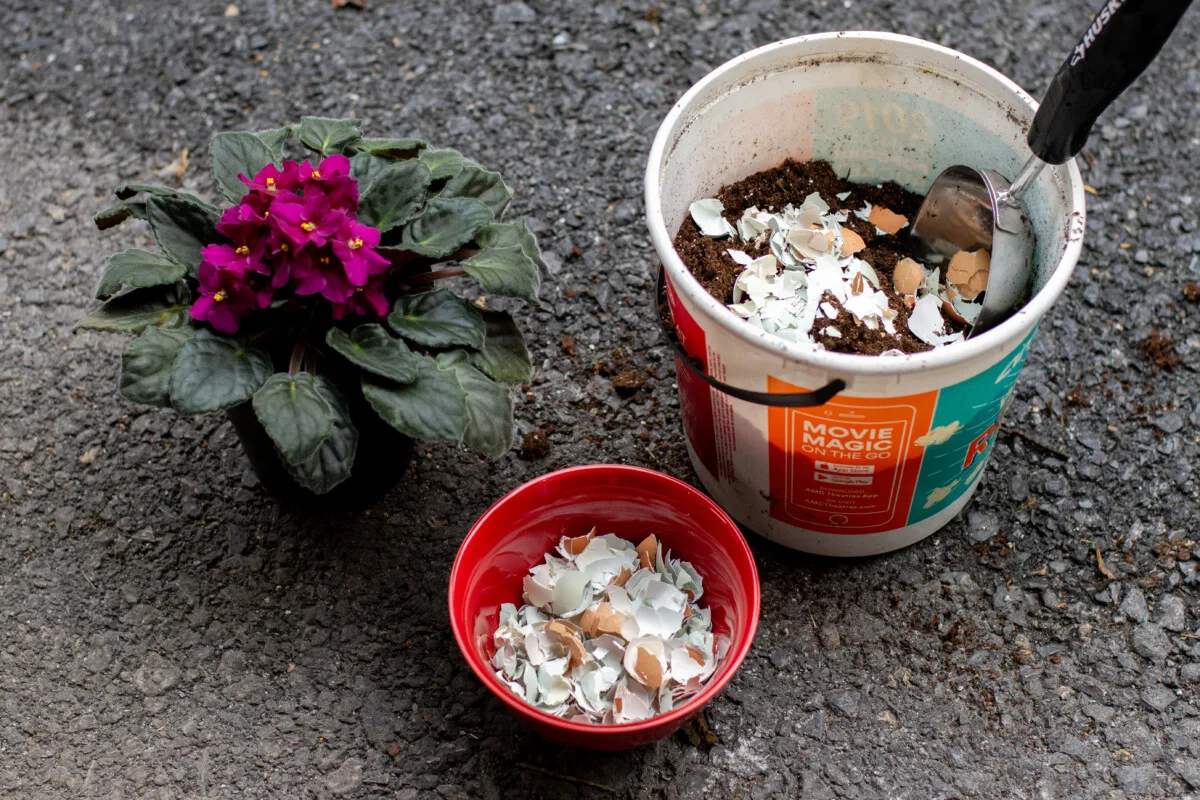
5. Soil Amendment
Whenever you repot your houseplants, add some powdered eggshells. Your houseplants deserve the same nutrients as your garden. If you grind the eggshells into a course, crumbly powder, the shells will also improve drainage.
6. Custom Potting Mix for Houseplants
Use larger pieces of eggshells to create your own soil mix for plants that prefer quick-draining and light soil. Orchids, succulents, Christmas cactus and African violets all do better with a potting mix that incorporates a larger substrate. But why pay for special “bark blends” when you can make your own custom potting mix that also provides your houseplants with calcium?
Crush eggshells lightly with a mortar and pestle or a rolling pin. You want the pieces to be roughly ½” to ¼”. Mix the shells in with an all-purpose potting mix until you achieve the desired consistency.
The eggshells will aid in aerating the soil and improving drainage, making for a lighter mix. Your houseplants will also benefit from the slow release of calcium and other trace minerals as the eggshells break down in the potting soil.
Preparing Eggshells for Use
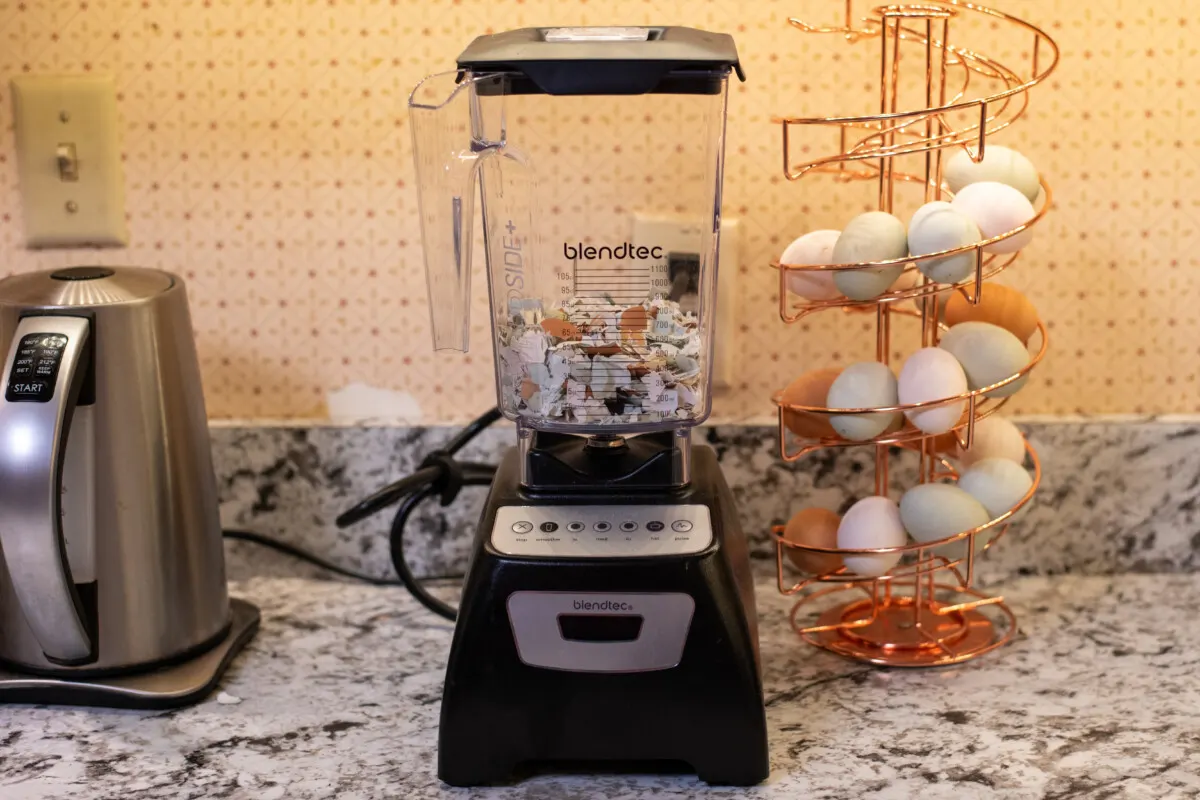
To prevent attracting the attention of unwanted critters in your garden, it’s important to prep eggshells before you use them. This step is even more important if you plan to use them in your houseplants, as you don’t want to endure funky smells or bugs in your home.
- When saving your eggshells, you’ll need to rinse them off. I find it easiest to do this as I use them. I crack, rinse, and then toss them into a bowl kept on the edge of the sink. You can also remove the inner membrane if desired, although it’s unnecessary and can be a bit fussy.
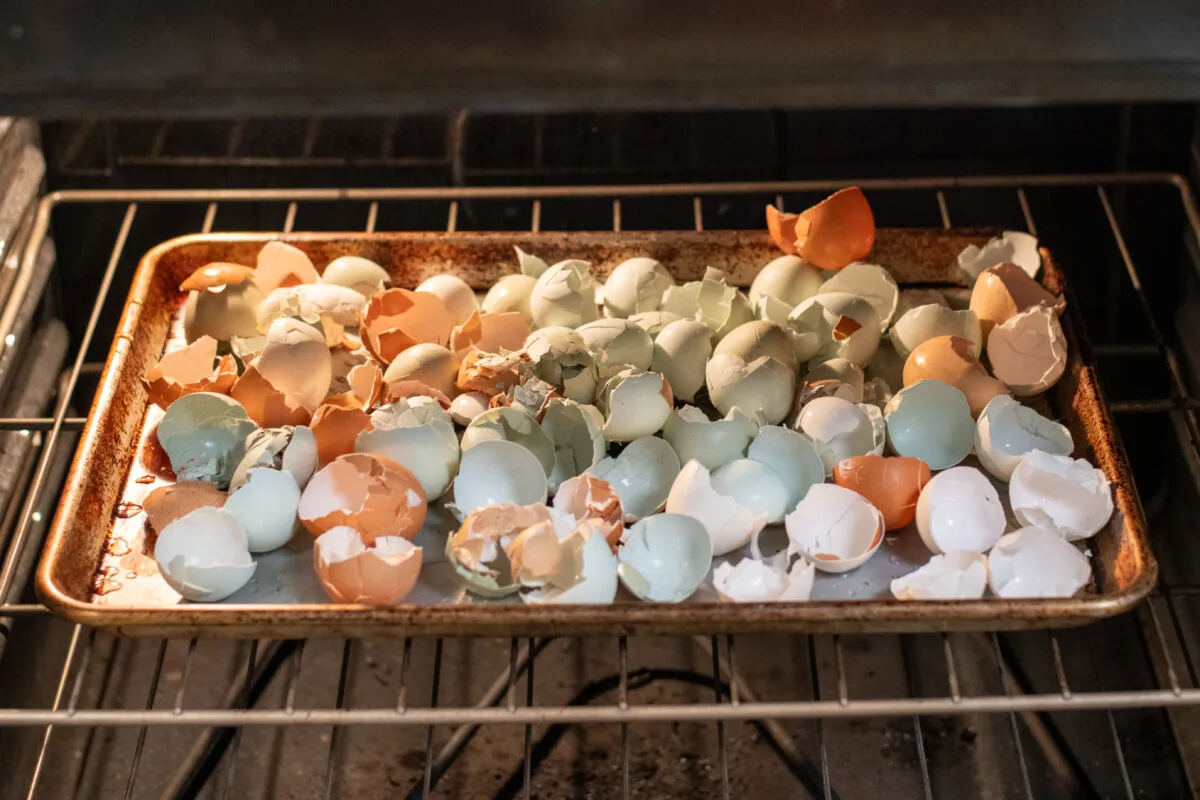
- Allow the eggshells to dry completely. You can let them air-dry and grind them up now and then as your bowl fills. Another easy way to dry them out is to spread the shells on a baking sheet and place them in the oven on the lowest setting for about an hour. You want them completely dry before you process them further. The heat makes them brittle and easier to crush, too.
- Now, either crush or grind up the shells. You can use a mortar and pestle if you’re doing a small batch, but I find pulsing them in the food processor or blender is much quicker. Go slowly using quick pulses to control the size of the finished powder.
A quick note
Over time, eggshells can scratch the inside of plastic blender jars and food processors. Keep that in mind if you intend to do this regularly. If this will be your go-to method for disposing of eggshells, you might want to consider picking up a cheap blender at Goodwill or a thrift store.
Store your finished eggshell powder in a jar or other clean, lidded container. I like to toss in a desiccant packet to ensure the powdered shells stay nice and dry.
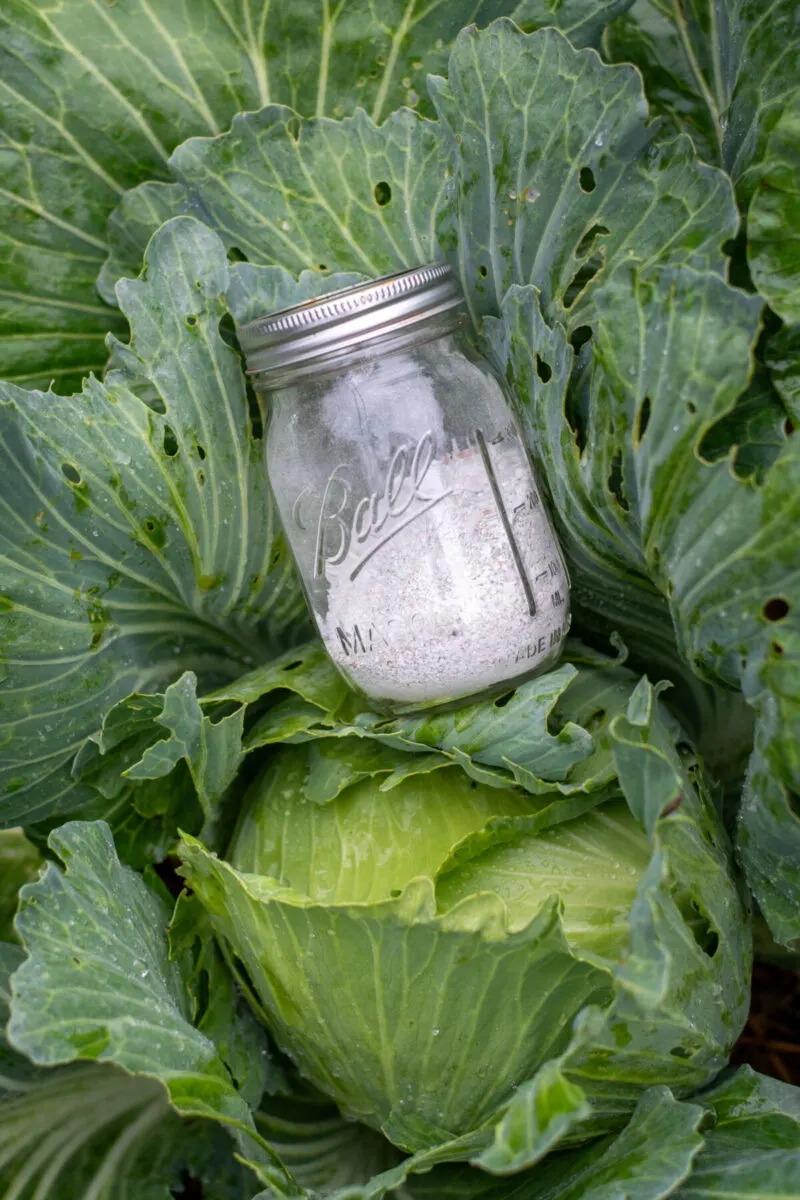
While eggshells are not the miracle panacea many on the internet claim them to be, they’re still a great, natural soil amendment for your garden, especially when you consider they would go in the trash otherwise.
